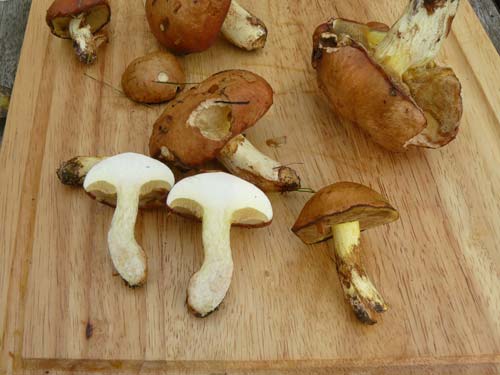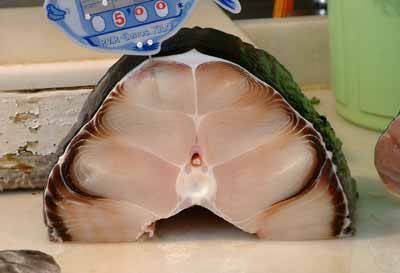Introduced from Mexico to Europe in mid 17th Century, usually grown as an annual. Best from early June to end of September.

Beef cut from the neck. Relatively lean, usually cut up as stewing steak or stewing beef and sometimes minced (US: ground). Leaner than chuck or blade, but less tasty than shin. Most economical cut. It is used in stew, but must be well seasoned and cooked slowly.

Slippery Jack mushroom, also known as the sticky bun. Listed as edible but some people do have allergic reactions to it.
Known as the 'King of cheeses'. An ivory-coloured, blue-veined, creamy cow's milk cheese, traditionally served with port and consumed at Christmas. It is thought first to have been made by a housekeeper at Quenby Hall, near Leicester, to a recipe called Lady Beaumont's Cheese. She sold her cheeses to a relative who owned a pub at nearby Stilton called the Bell Inn. Many copies have been made but the rules have now been laid down. A true Stilton is made from full cream cow's milk in the form of a cylinder. It is unpressed and has a natural rind. (PDO). It is also good as a flavouring for vegetable soups and in salads.

Smooth hound, a type of dogfish, a large, long, thin marine fish with brown skin and very prominent fins, usually eaten as steaks. The fish should be skinned before it is cooked.
So-called because this hard cow's milk cheese is washed and rubbed with perry, a cider made from pears, in this case the variety being 'Stinking Bishop'. The result is a pungent cheese with an almost buttery texture. This cheese has similarities to Munster. It is made with pastuerised milk from elegant Gloucester cows in Dymock in G|oucestershire. Don’t discard the rind as it is definitely edible. This was a Gold medal winner at 1994 British Cheese Awards and Bronze Medal winner at 1996 British Cheese Awards.
Long coriander. Stinkweed. A herb widely used in seasoning and marinating in the Caribbean. It is also used extensively in Thailand, India, Vietnam, and other parts of Asia as a culinary herb. This variety of coriander dries well, retaining good color and flavor, making it valuable in the dried herb industry. It is sometimes used as a substitute for cilantro, but it has a much stronger taste.
An old variety of green English cooking apple, not readily available, which cooks to a purée. It was raised near Stirling in Scotland by Mr John Christie in the 1820s and then introduced commercially by a nearby nursery. This mid-season variety is harvested from mid-September in South-East England and is at its best from September to December.